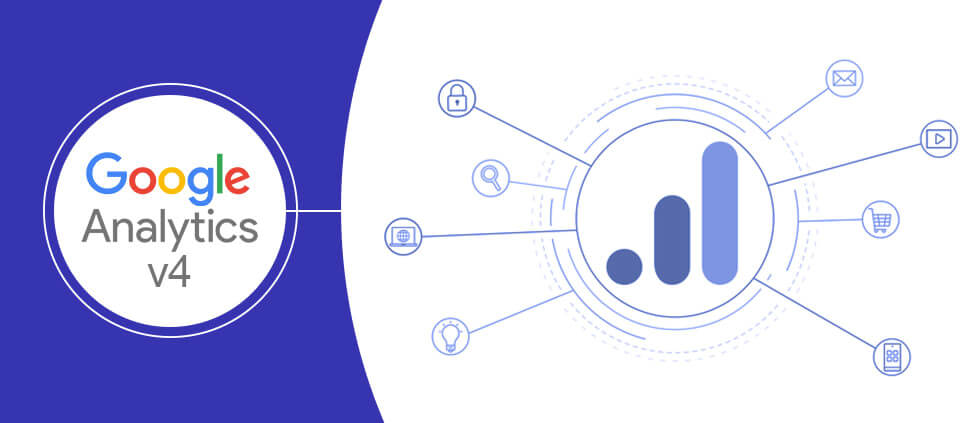What Financial Services Marketers Need to Know About Google Analytics v4 (GA4)

In the fall, Google announced the release of Google Analytics 4 (GA4), the latest version of its web analytics platform, formerly known as “App + Web.” Most marketers currently use Google’s Universal Analytics property, which is primarily focused on website analytics. This new and more intelligent property allows marketers to gain a better understanding of how customers and prospects interact with your website, mobile app and even ads on the web – bringing it all together throughout the entire lifecycle.
As financial services marketers, improving the use of analytics in determining marketing ROI is a top priority. Google Analytics is a vital tool for analyzing website traffic, tracking the effectiveness of digital marketing efforts and collecting data on user acquisition and behavior. As trends emerge, marketers must evolve, and analytics tools must evolve right along with them. Google cites two trends – cross-device behavior and data privacy – as key drivers behind the release of GA4.
10 key points about Google Analytics v4 for financial services marketers
- GA4 was built for cross-device and platform tracking. It can determine that the same person hit your site or app from their mobile device and their desktop and see these interactions as a single user. This will give marketers more control when building audiences and retargeting with Google Ads.
- GA4 uses machine learning. AI-powered insights and predictive metrics are some of the most powerful new features for marketers. The system will have the ability to do better audience building for Google Ads and potentially alert you about unusual traffic patterns and predict revenue for particular audiences.
- GA4 is changing up the approach to reporting. The Universal Analytics interface allows you to go window shopping for data points that may be relevant. Fundamentally, GA4 is geared towards answering questions. For example: what was my top-performing channel based on conversion? When using the GA4 interface, it’s helpful to know the questions you want to answer ahead of time. There is a report builder interface that allows for creating custom reports. Google is also pushing people towards Google Data Studio as a means to pull and visualize data.
- All data points tracked in GA4 are considered events. In the current GA, an event is a special type of data point that is manually passed in; GA4, however, considers every data point, including page views, to be events.
- There are some event types that in the past needed to be manually created that are now built-in to GA4. For example, outbound link clicks, percent scrolled, file downloads (PDFs and other downloadable files) and video interactions can all be enabled via the Enhanced Tracking settings and no longer require special coding.
- Conversions are also just events that have been marked as conversions. For example, to track a form submission, the submission would be tracked as an event and that event is then set as a conversion event. This varies from Universal Analytics, where goals (conversions) need to be explicitly defined separately from events. GA4 supports 40 conversions versus the 20 per view in the existing Universal Analytics.
- GA4 is now the default property type used when creating a new property. It is still possible to create a Universal Analytics property, but it requires changing the default settings on the new property screen.
- While GA4 is now the default option for setting up a new property, it is not likely that the existing Universal Analytics interface will be going away anytime soon. We recommend that site owners set up both property types and run them side by side.
- GA4 is a forward-facing tool, meaning it only collects data from the time of creation. Turning on GA4 as soon as possible – so that it starts collecting the data it needs – is the way to go since you will not be able to pull data retroactively from Universal Analytics.
- GA4 has a more robust focus on user privacy. As more users (and browsers) focus on user privacy and limiting tracking pixels, GA4 does not rely on cookies. Instead, it leverages Google Signals and machine learning to generate a more complete view of user behavior on a website. Also, Universal Analytics allows you to potentially store user and event-level data on Analytics servers for up to 50 months, but GA4 only allows retention for user-level data for 14 months. This change should not drastically impact most users, but it shows Google is following the broader industry trends in enhancing privacy.
Getting started with GA4 now allows you to start familiarizing yourself with the tool earlier and help flatten the learning curve. While Universal Analytics will still be there for the time being, GA4 is the future of Google Analytics and the focus of Google’s future developments.







